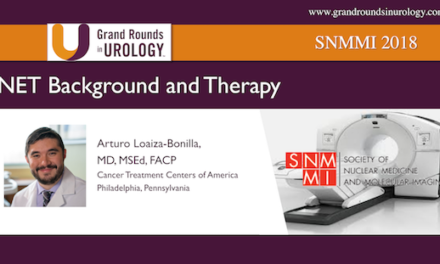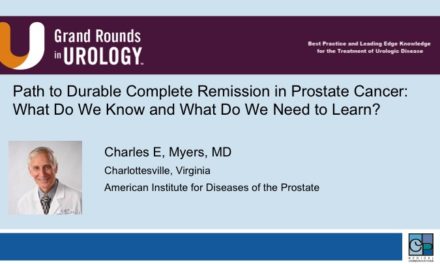
PCa Commentary | Volume 162 – February 2022
Posted by Edward Weber | February 2022
ACTIVE SURVEILLANCE: Patient Selection and Monitoring – An Update
[A prior Commentary, Vol. 138, published in September 2019, covered this topic and remains current. This Commentary will build upon it.]
Guidelines suggesting ‘best practice’ regimens for eligibility for active surveillance and monitoring continue to evolve. The National Comprehensive Cancer Network (NCCN), an association of prostate experts, states that active surveillance (AS) is the ‘preferred’ initial management option for most men diagnosed with low-risk prostate cancer, but acknowledge that some features, i.e., a high disease burden, BRCA-positive disease, a strong family history of prostate cancer, or high anxiety about delay of treatment render these men less favorable candidates.
NCCN defines ‘low risk’ as prostate cancer with no palpable prostate nodules (or only one), Gleason Grade Group 1 (i.e., 3+3), and PSA < 10 ng/ml. Men having a PSA density of < 0.15 ng/mL/gram and < 3 positive cores with ≤ 50% in each qualifies as ‘very low risk.’
Based on those parameters, optimal outcome for AS was reported by Johns Hopkins (Scott et al. Urologic Oncol. 2017) in a study of 1298 men using the ‘very low risk’ criteria for eligibility. They reported cancer-specific and metastases-free survival at 10 and 15 years as 99.9% and 99.4%. “The median treatment-free survival was 8.5 years. Grade reclassification was 26% and 31% at 10 and 15 years respectively and those men transitioned to active treatment. The cumulative incidence of curative intervention was 50% at 10 years and 57% at 15 years”—state of the art results.
Caveat: Increasing eligibility by lessening restrictive criteria results in poorer outcomes, but, importantly, provides the opportunity of greater participation—so a balance needs to be struck.
The CANARY Prostate Active Surveillance Study and Risk Calculator:
The risk of converting to active treatment can be estimated, but ultimately it is the patient and physician who must decide what estimated period on AS before likely intervention is an acceptable goal for an individual.
Data from the large CANARY study has been incorporated into a risk calculator based on readily available personal and disease features. The factors that affect the risk of conversion are body mass index, prostate volume, biopsy pathology information, number of biopsy cores positive for cancer, and the initial and subsequent PSA values. The calculator estimates the risk of detecting aggressive cancer in subsequent prostate biopsies during the following 4 years. The authors felt that estimating the risk of conversion at 4 years into AS was a clinically meaningful milestone to provide the patient and physician a basis for management discussion.
The protocol regime for the study was quite restrictive: Gleason Grade Group 1 on initial biopsy and Gleason Grade Group 1 or no tumor on a confirmatory biopsy, ultrasound-guided biopsies at 6 – 12 months during the first two years and then at 24-month intervals thereafter, PSA every three months, and MRI and tumor biomarkers (at physician’s discretion). If Gleason Grade Group 2 (i.e., 3+4) were found on first confirmatory biopsy, it was assumed that the patient had been initially undersampled and the patient was excluded from the study (Cooperberg, Lin, et al. JAMA Oncology, 2020).
Cooperberg, Lin, et al, addressed the question of whether selected men with a low calculator-based risk for conversion could safely be followed with fewer biopsies and less intensive monitoring. Their answer was affirmative, but no specific recommendations were made; instead, they suggested that the risk analysis should “guide discussions” between patients and physicians about decreasing the intensity of monitoring.
“Factors Associated with Time to Conversion from Active Surveillance to Treatment for Prostate Cancer in a Multi-Institutional Cohort,” Cooley et al. J Urol. Nov 2021.
Based on 6775 men with a 6.7-year follow-up, 33.4% of men converted to treatment. Major clinical factors at initial diagnosis leading to later conversion were Grade Group 2 or greater, tumor stage cT2 (tumor nodules on one side of the prostate), three or more positive biopsy cores and PSA > 5 ng/mL. “Patients with high-volume GG1 tumors have a shorter interval to conversion than those with low-volume GG1 tumors and behave like the higher-risk patients.” In the overall cohort, the median time to conversion was 6.8 and 6.1 years for low- and intermediate-risk disease.
This study was based on patients from 28 institutions. There were no specific enrollment criteria. The intent of the study was to “reflect current clinical practice.” The authors acknowledged study limitations: lack of PSA density and biopsy-based genomic markers (i.e., BRCA status), not employing multiparametric MRI-guided biopsies for diagnosis and monitoring, and the lack of protocol specified confirmatory and surveillance biopsies—all features that would likely currently be employed in selecting and monitoring patients for AS.
Can an MRI Substitute for Sequential Biopsies?
Optimal features for AS eligibility are Grade Group 1 (3+3) or 2 (3+4 with only < 5% of the total length of Gleason pattern 4 across all cores) and employing multiparametric fusion-guided targeted biopsies. Unfortunately, the negative predictive value for ruling out upgrading in this study was only 79.5% over each of the first 4 surveillance biopsies, supporting the comment “that mpMRI is helpful but insufficient to rule out pathological reclassification, especially on a confirmatory biopsy or in the presence of other risk factors” (Chu et al. Eur Urol, 2020). A similar finding was reported by Lee et al. (Prost Can & Prost Dis. 2022) reporting that not performing accompanying systemic biopsies misses 21% of significant cancers. Hence the MRI needs to be accompanied by a standard 12-core biopsy to pick up unsuspected additional sites of significant cancer.
A “Negative first follow-up prostate biopsy on active surveillance is associated with decreased risk of upgrading, suspicion of progression and conversion to active treatment.” This finding was reported in a study by Singh et al. (BJU Int. 2021). This event could be the basis for less intensive monitoring.
A lessened intensity of monitoring could also be based on a favorable risk estimate on the CANARY risk calculator or an initial PSA density of ≤ 0.1 ng/mL2.
PSA velocity thresholds associated with progression were 1.18 ng/mL/y for non-Hispanic White patients and 0.44 ng/ml/y for African American patients (Tyler et al. Urology. 2021).
BOTTOM LINE:
Carefully selected and monitored men on active surveillance can safely delay intervention for a median of 8.5 years if adhering to a strict protocol regimen.
Your comments and requests for information on a specific topic are welcome e-mail ecweber@nwlink.com.
Please also visit https://prostatecancerfree.org/prostate-cancer-news for a selection of past issues of the PCa Commentary covering a variety of topics.
“I want to thank Dawn Scott, Staffperson, Tumor Institute Radiation Oncology Group, and Mike Scully, Librarian, Swedish Medical Center for their unfailing, timely, and resourceful support of the Commentary project. Without their help this Commentary would not be possible.”




